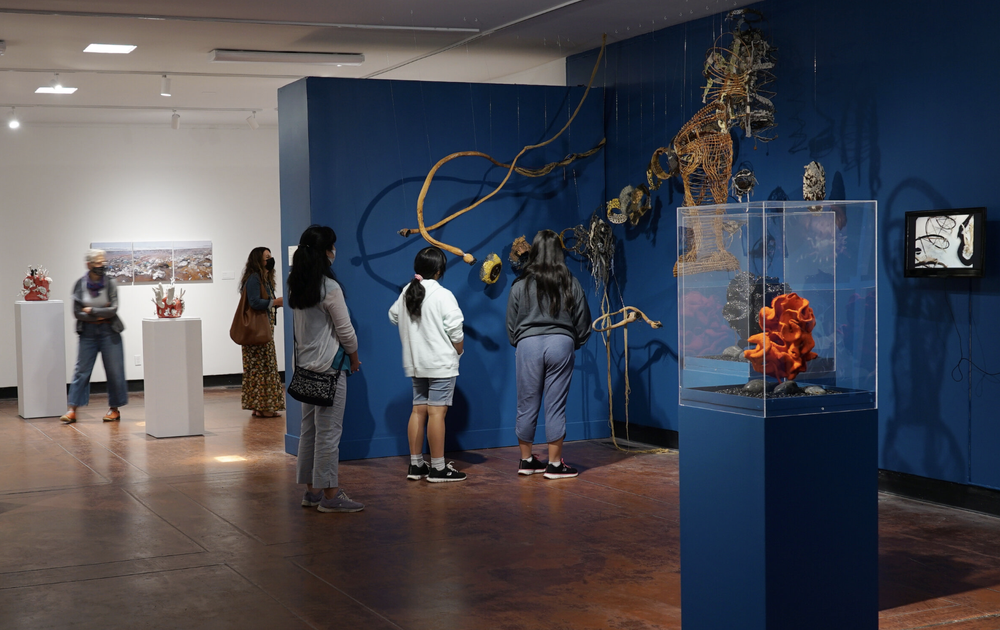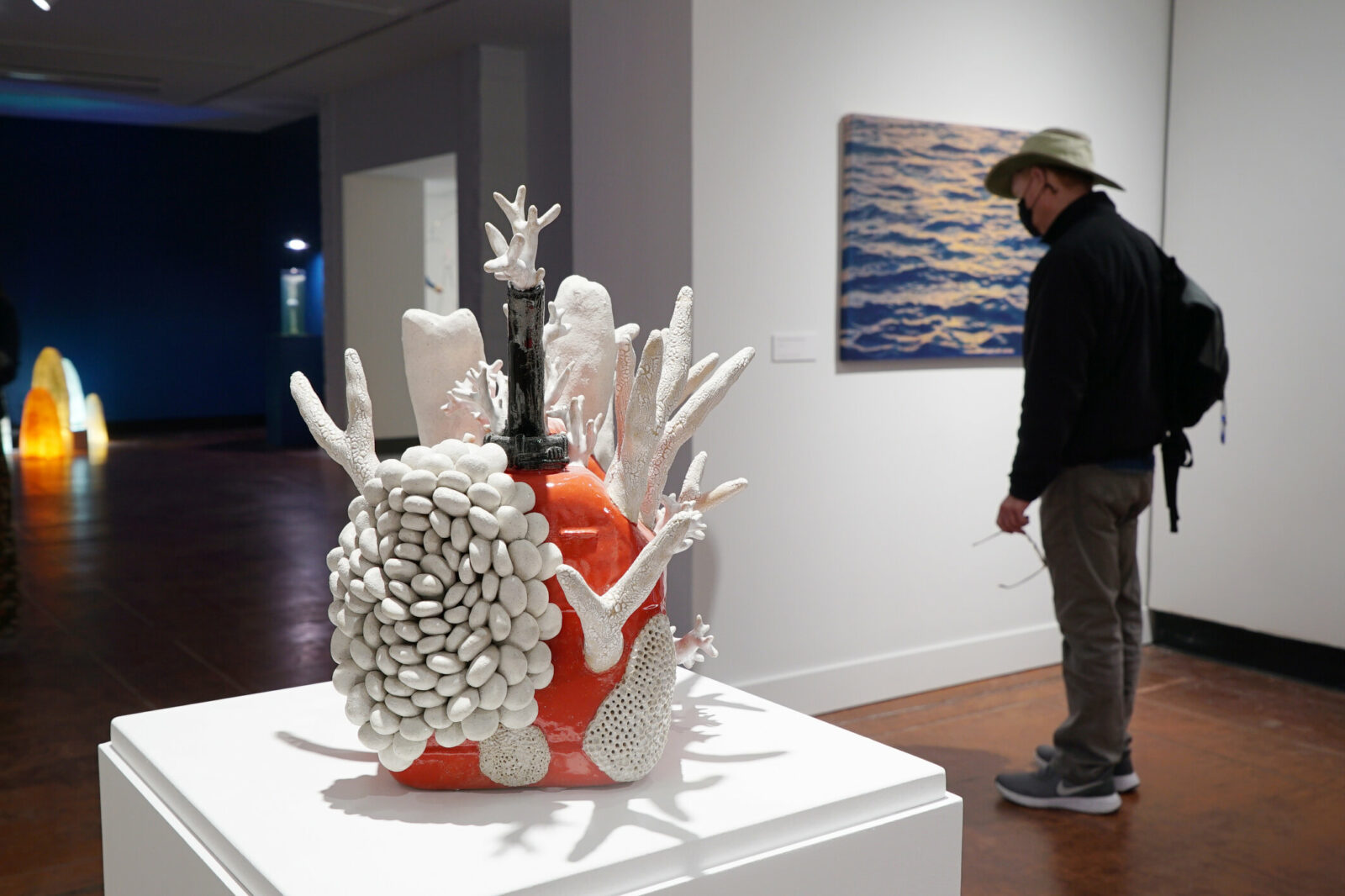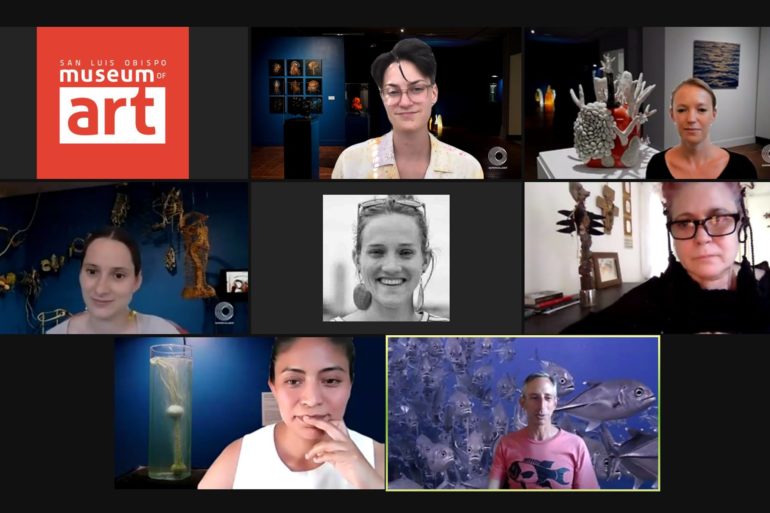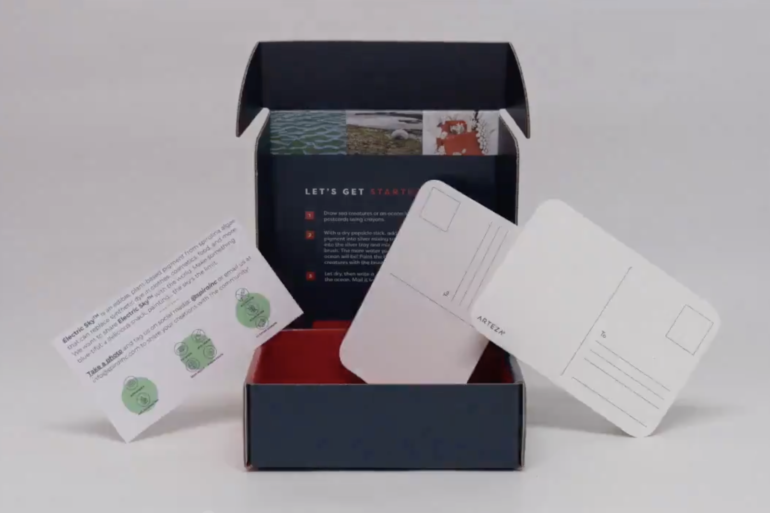Featured Artists: Christine Wertheim, Carolina Caycedo, Courtney Mattison, Stephen Ehret, Carol Satriani, Elena Soterakis, Maru García, Rowe Moser, Isabel Beavers, Danielle Parsons, Janna Avner, Patrick Webster, Kate Vylet, Emma Akmakdijan, Richelle Ellis
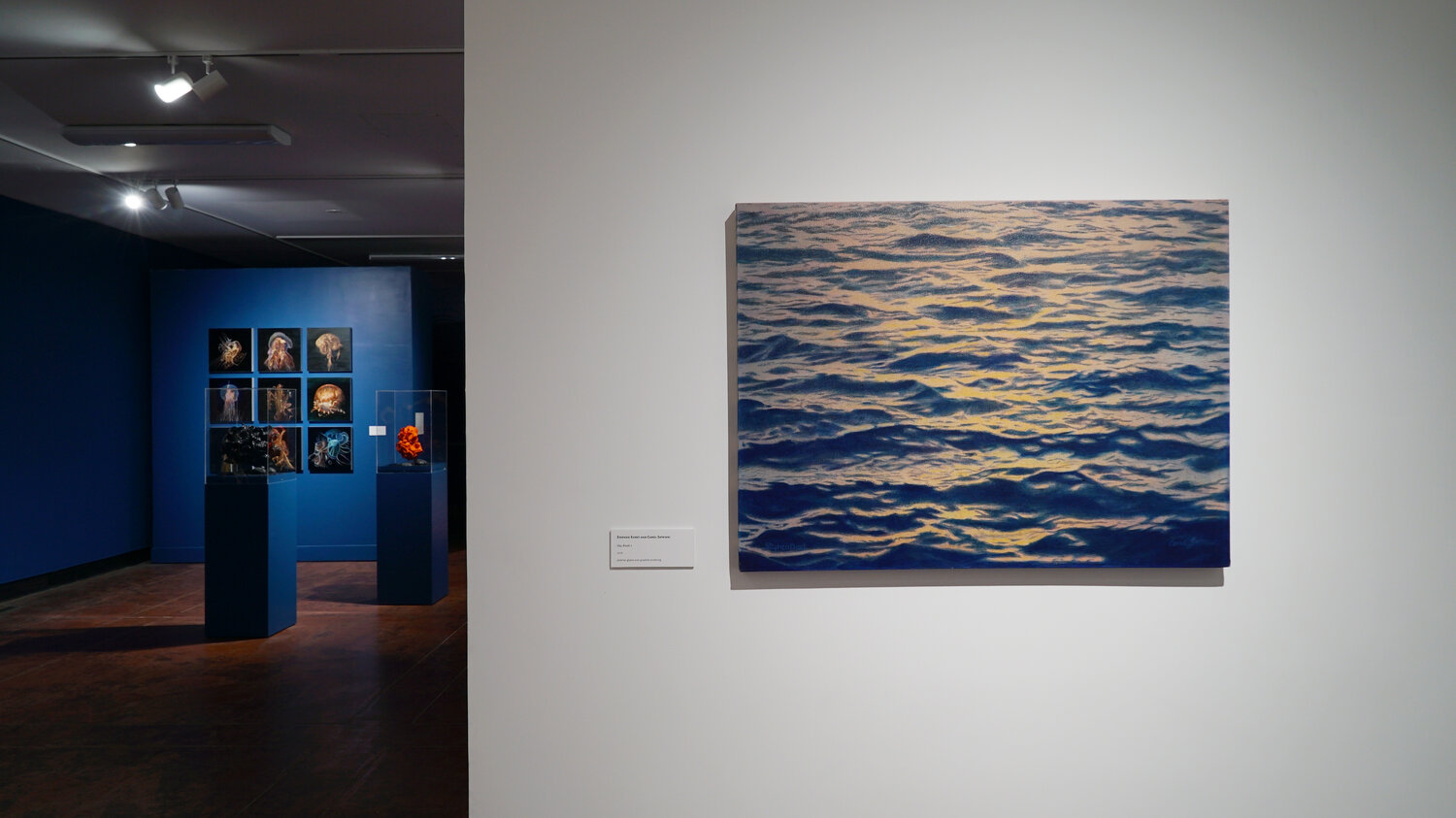
Atmospheres Deep is a multimedia group exhibition presented by SUPERCOLLIDER at the San Luis Obispo Museum of Art. This curation examines coastal regions above and below the water’s surface to uncover human impact on the ocean. Fifteen featured artists and scientists utilize film, soundscapes, biomaterials, artificial intelligence, modular painting, and collaborative weaving to communicate marine biodiversity loss, plastic pollution, and deep sea resource extraction. Atmospheres Deep is an urgent response to the oceanic climate crisis: these works draw parallels between the physical constraints of exploring deep seas in zero gravity and the psychological pressures resulting from increasing environmental degradation.
On land, one atmosphere (a unit of measurement) is equal to the weight of the Earth’s atmosphere at sea level, approximately 14.6 pounds per square inch. Pressure increases approximately one atmosphere for every 10 meters of water depth, resulting in pressures that are intolerable for humans. The artworks in this curation mirror these intolerable pressures, descending from the shoreline to the deep sea, as visual explorations of water bodies that depict resilient marine biodiversity in the face of our ecological impact.
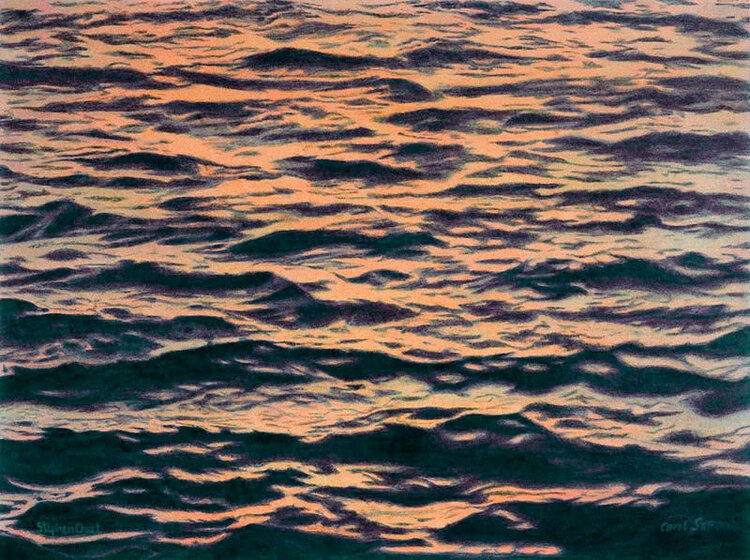
At the water’s surface, acrylic and graphite paintings by Stephen Ehret and Carol Satriani depict the shadows that dance across the water’s rippled surface, conveying a sense of serene tranquility. Similarly, Rowe Moser’s video, There is a Fault in the System, meditates on the surface tensions of shapeshifting pixels lapping against the shoreline. Janna Avner’s oil and holographic-resin painting, Buoy, depicts her Alaska native tradition of gill net fishing the Yukon river, which moves downstream with the current that releases into the ocean. An uninterrupted fluvial flow supports the regeneration of fish and sediment deposits from the rivers to the sea. Buoy also intimates feelings of urgency, frugality, and psychological pressure resulting from dwindling salmon populations in the North.
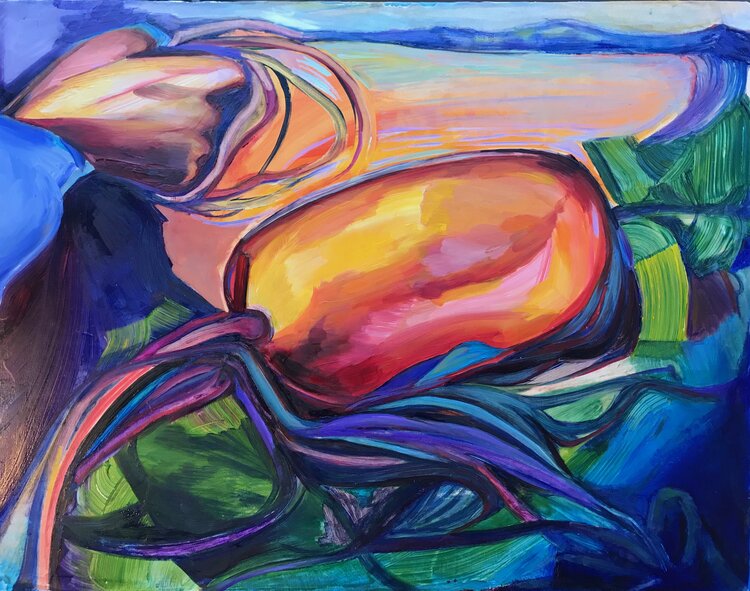
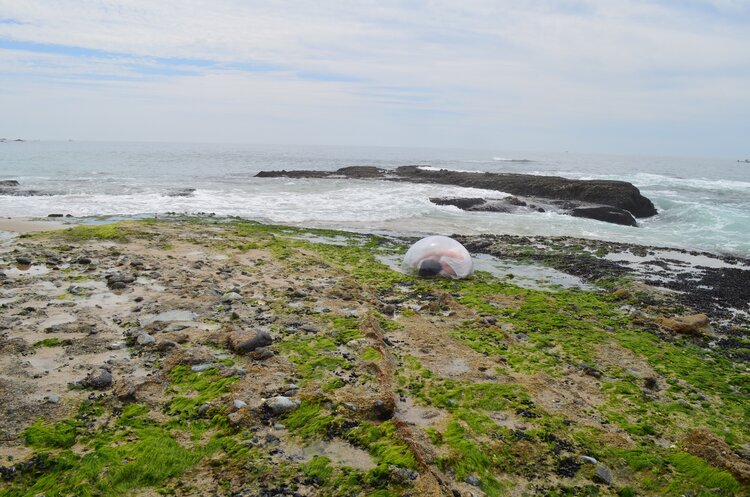
Following a similar downcurrent stream, artist Carolina Caycedo conveys the necessity for unfractured rivers to replenish life cycles essential for subsistence fishing. In her two-channel video, To Stop Being a Threat and To Become a Promise, Caycedo visualizes the environmental injustices of damming bodies of water. Caycedo introduces human and nonhuman characters in a kaleidoscopic video of aerial and underwater imagery that shows the environmental repercussions of ignoring natural waterforces and their ecosystem balance. In comparison with Caycedo’s work, artist Maru García shares an attention to biocultural diversity in her pieces, a spirulina algae tank and a digital photograph of a biodome, titled Vivarium I. Speculating on bioremediation, human participation, and molecular worldmaking, García’s pieces dissolve the stagnant binary of scientific and artistic investigations through experimental and visual collaborations with microorganisms.
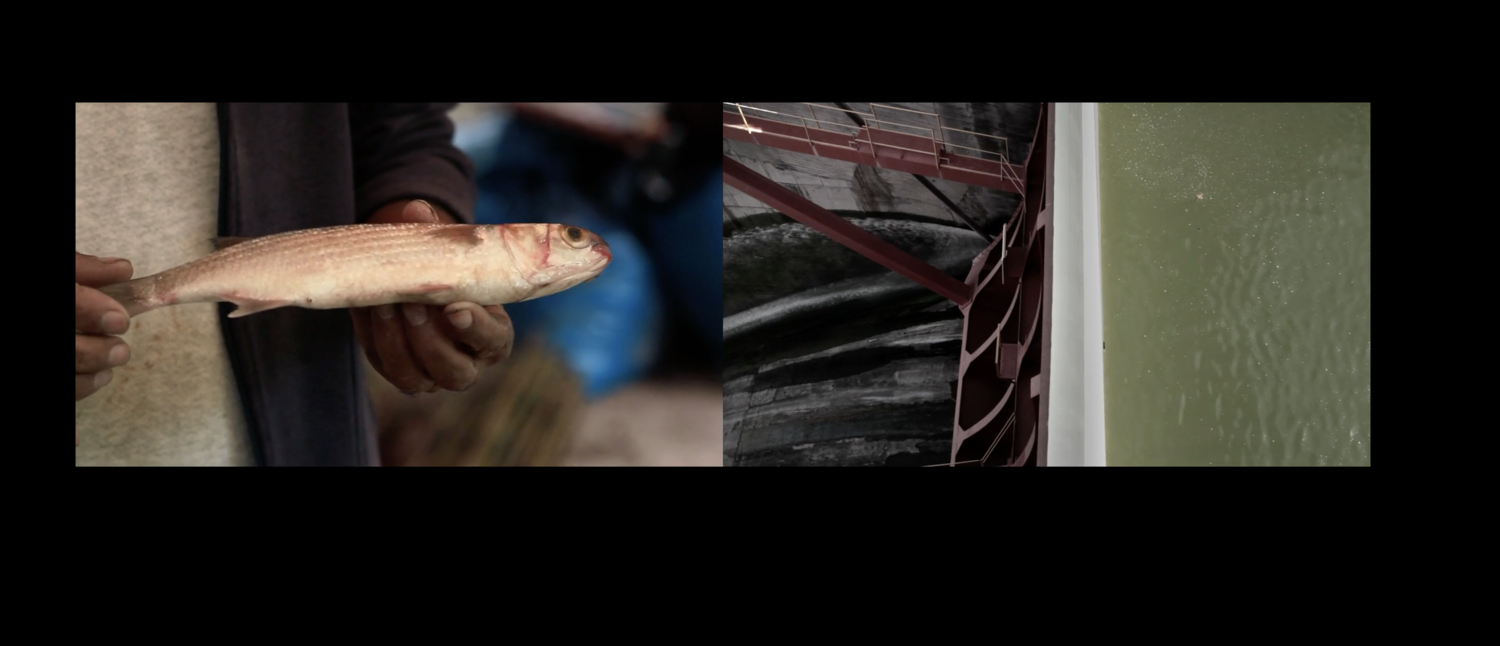
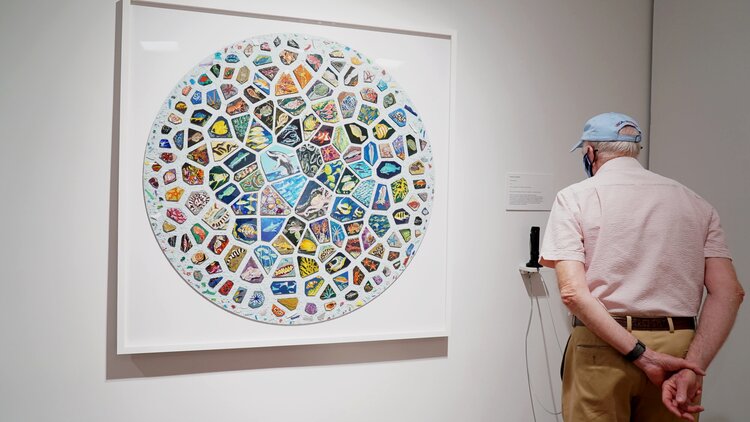
Speculating on shallow reefs, artist Richelle Ellis’ puzzles together an interconnected web of species interactions surrounding the coral reef. Viewers are invited to interact closely with Gribble’s large sculptural painting titled Oceans Deep—comprised of acrylic paint, oil pastels, and ink on laser cut puzzle—by looking through a UV light to uncover the illuminescent threads between each aquatic organism, which resemble the phosphorescence of dying coral reefs. Courtney Mattison’s two ceramic pieces resembling ruby-red oil tins covered in coral, titled Glazed: Danger and Glass Can I, represent the regeneration of coral life on vessels of anthropogenic pollution. These works reveal the intractable, lingering presence of human waste as species adapt to destructive alterations of their homes.
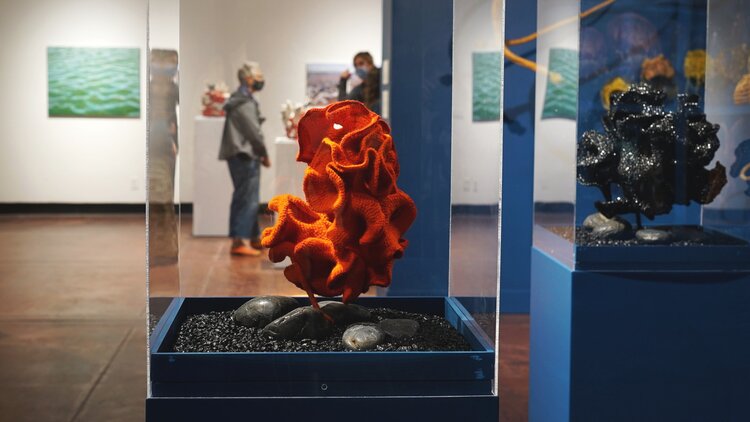
The Crocheted Coral Reef (CCR) of Christine Wertheim upcycles acrylic and plastic threads that would otherwise enter waterways and oceans. These threads contribute to the severity of islands of pollution and plastic conglomerates. This pollution is ingested by animals, disrupting their endocrine systems and staying in their bodies as they are consumed through the food chain. CCR is the largest international collaboration between female hand crocheters throughout dozens of nations. Through collaboration with her sister Margaret Wertheim, Wertheim uses a mathematical pattern called a hyperbolic formula to provide a blueprint for each hand woven coral. CCR reveals a plethora of diverse materials and structures that can be derived from one equation.
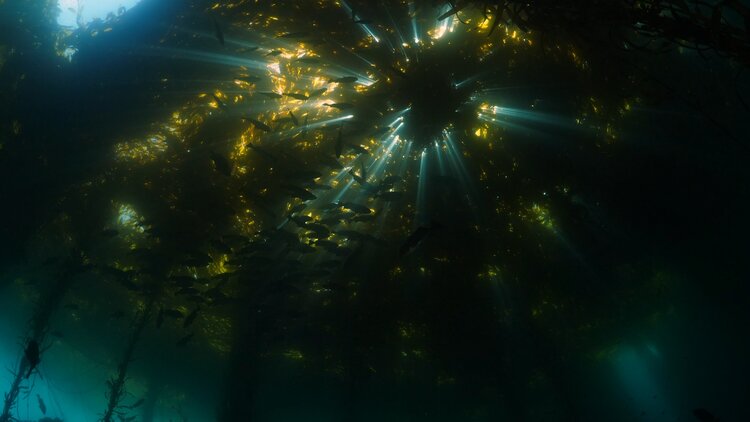
In the works created by Marine biologists Patrick Webster and Kate Vylet, Kelp Cathedral — Underwater in an algal amphitheater, a single-channel video, and Striations of the Sea, a digital photograph, respectively, viewers descend a water column in rocky subtidal reefs where central California kelp forests teem with biodiversity. As diving researchers from the Monterey Bay aquarium and Reef Check, these scientists show what monitoring climate change in annual kelp forests looks like: they demonstrate expediting lifecycles and changing dynamics, such as rising water temperatures and overgrazing sea urchins.
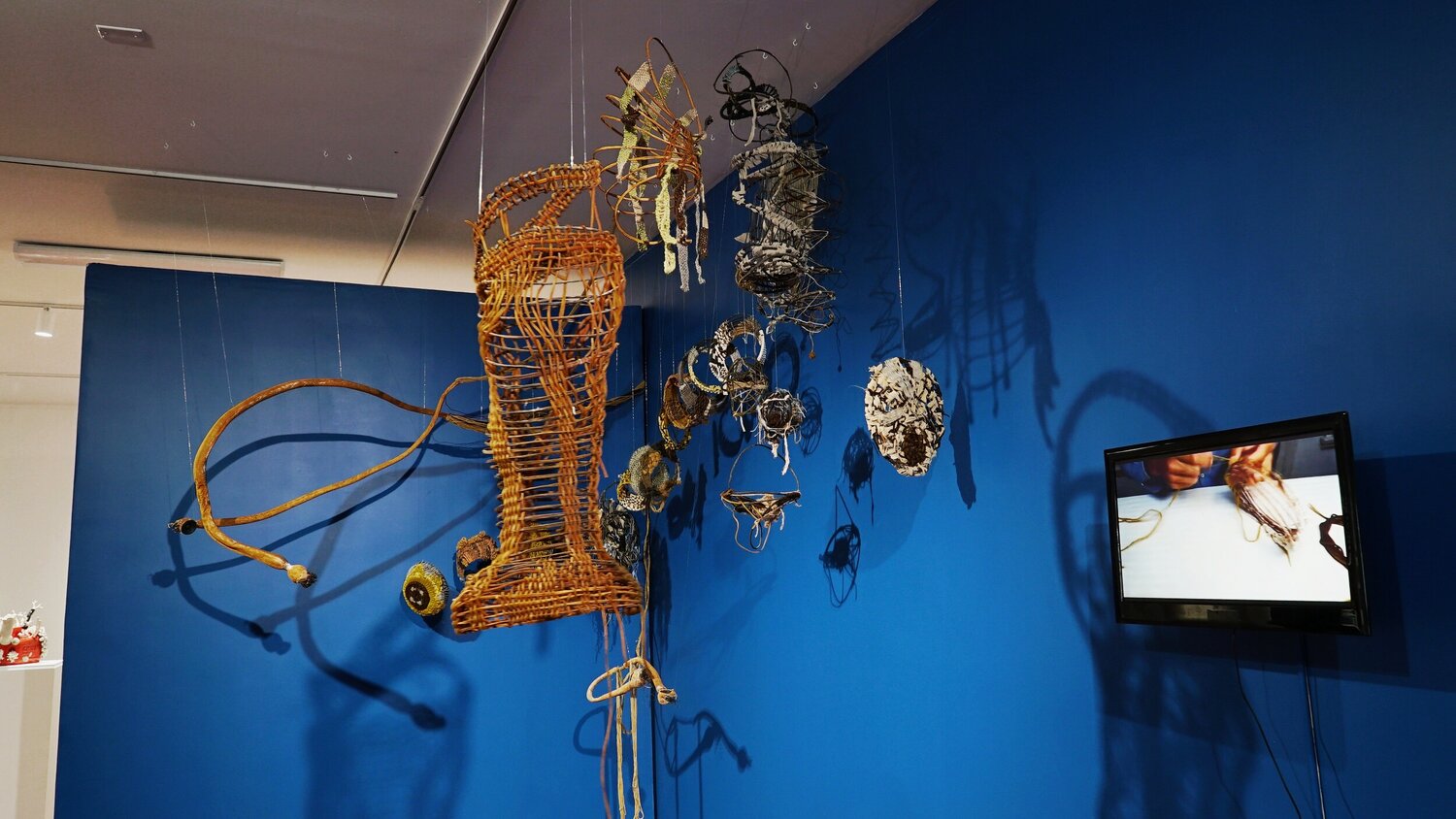
Emma Akmakdjian’s Weaving Threads is a collaborative installation of woven and naturally dyed fibers from heritage breed sheep and coils of bull kelp. This artwork is produced by 23 artists and creators who draw parallels between ecosystemic processes on land and at sea. Accompanying this collaborative installation is a single-channel video that illuminates this handmade process. Weaving Threads presents spirals of bull kelp that will surround and interact with viewers’ movements, along with the sonic sounds of a kelp forest recording. This recording is part of the Channel Islands Soundscape project, a collaboration between the National Park Service, Purdue University’s Center for Global Soundscapes, and sound ecologist Ben Gottesman, who uses sound to measure the health of kelp forest habitats.
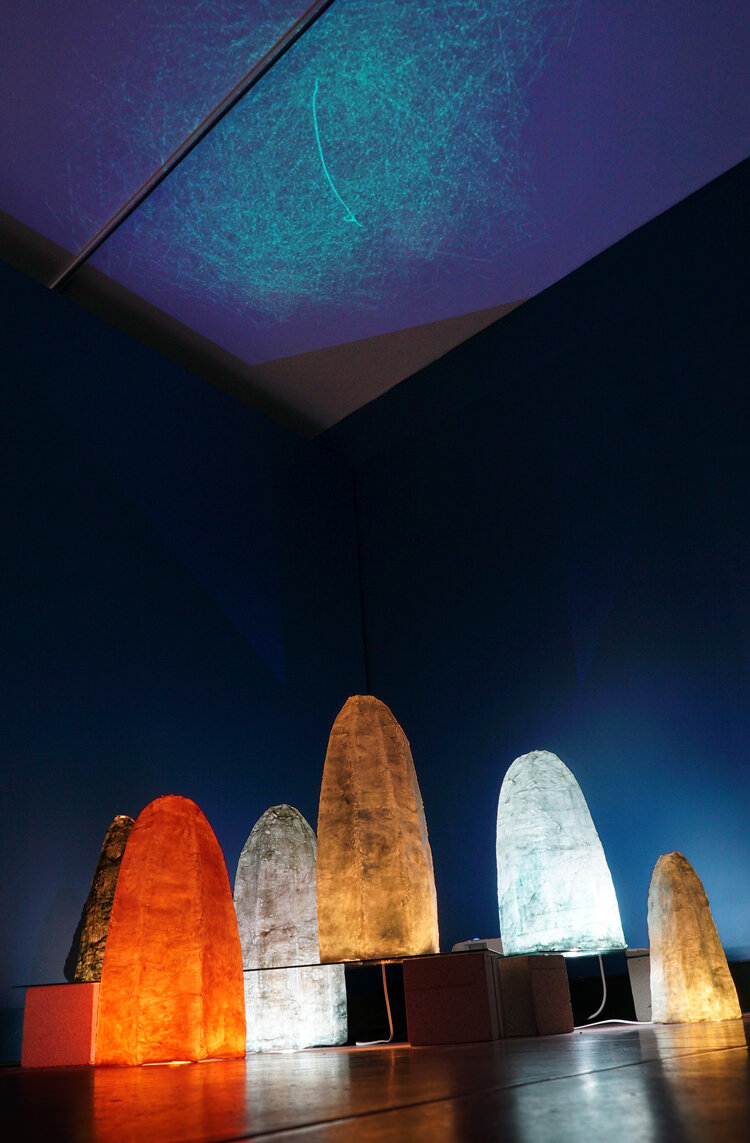
Viewers will delve microscopically into the water column with the artworks of Danielle Parsons and Isabel Beavers, whose works cluster together macro- and microorganisms’ geometries via scanned diatom installations. Nocturne: Sea, Beavers’s glowing sculptures of beeswax, pigment, saran wrap, and light, and Parsons’s video, Below Above, offer a closer look into the hidden world of microalgae and plankton that dance in every drop of ocean water, while invisible to the human eye. Plunging approximately 200 meters below surface, Elena Soterakis’s grid of illusive oil paintings, Co-Genesis: New Sea Morphologies, present luminous deep sea aquatic species that appear to transmogrify and shape-shift. In actuality, they are AI-generated forms derived from machine learning algorithms. The mystical essence of Soterakis’s deep sea creatures is augmented through the unique incorporation of nascent technologies for gene modification techniques that could one day birth new life forms.
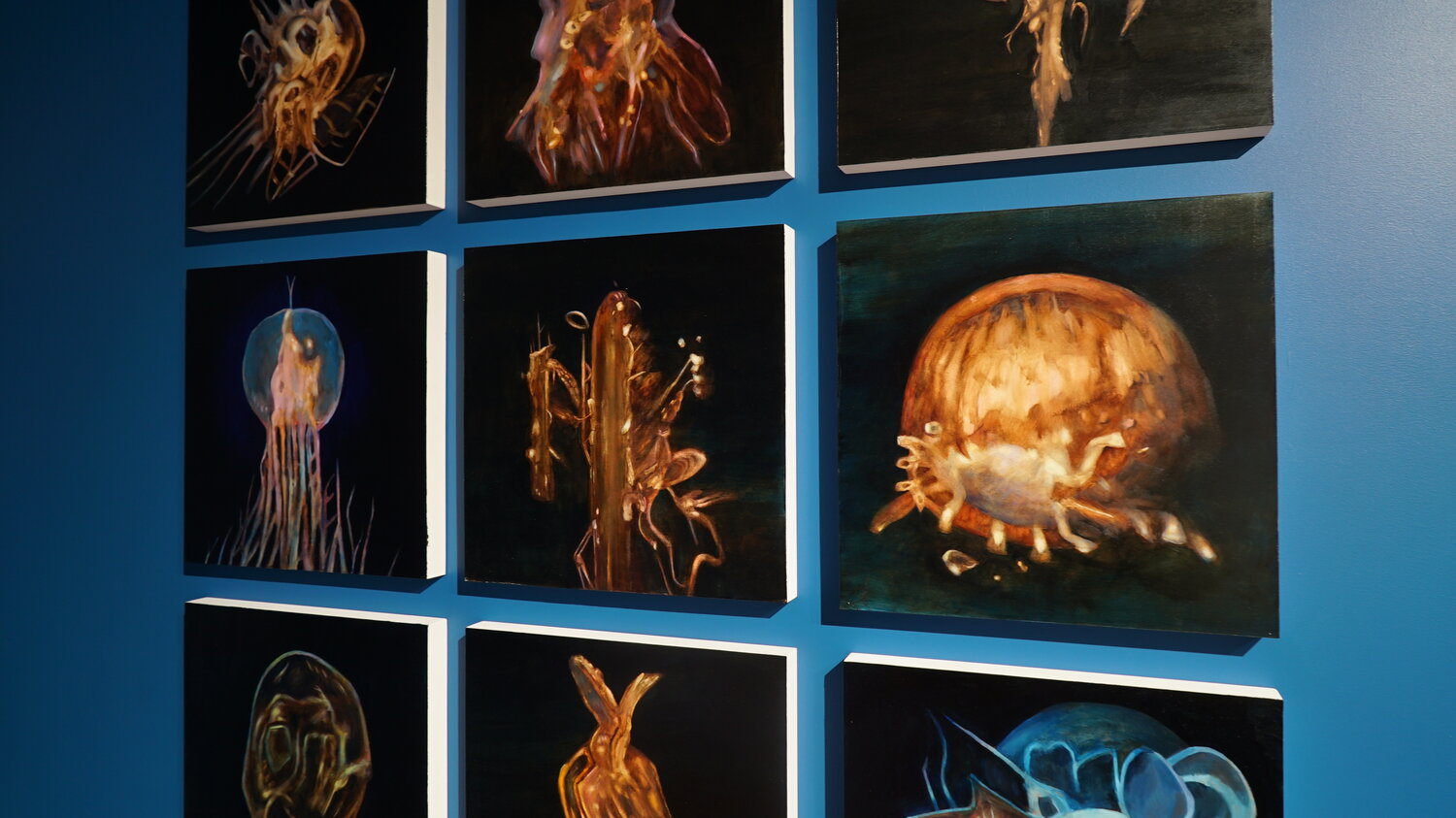
At all depths of the ocean, our human presence is made visible, altering and interfering with a vibrant marine world that transcends us. The global ocean appears so vast and out of reach, yet it makes all life possible; it absorbs carbon dioxide that would otherwise accelerate climate change by altering the world’s temperatures. Atmospheres Deep is a journey to regions that we cannot physically tolerate to reawaken our profound connection to the ocean, which is of equal importance to the air we breathe.
Curatorial writings: Emma Akmakdjian & Richelle Ellis. Edited by Janna Avner.
